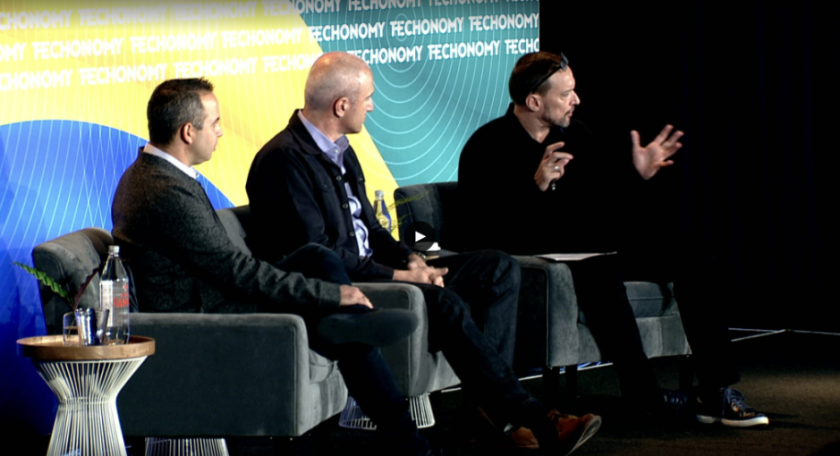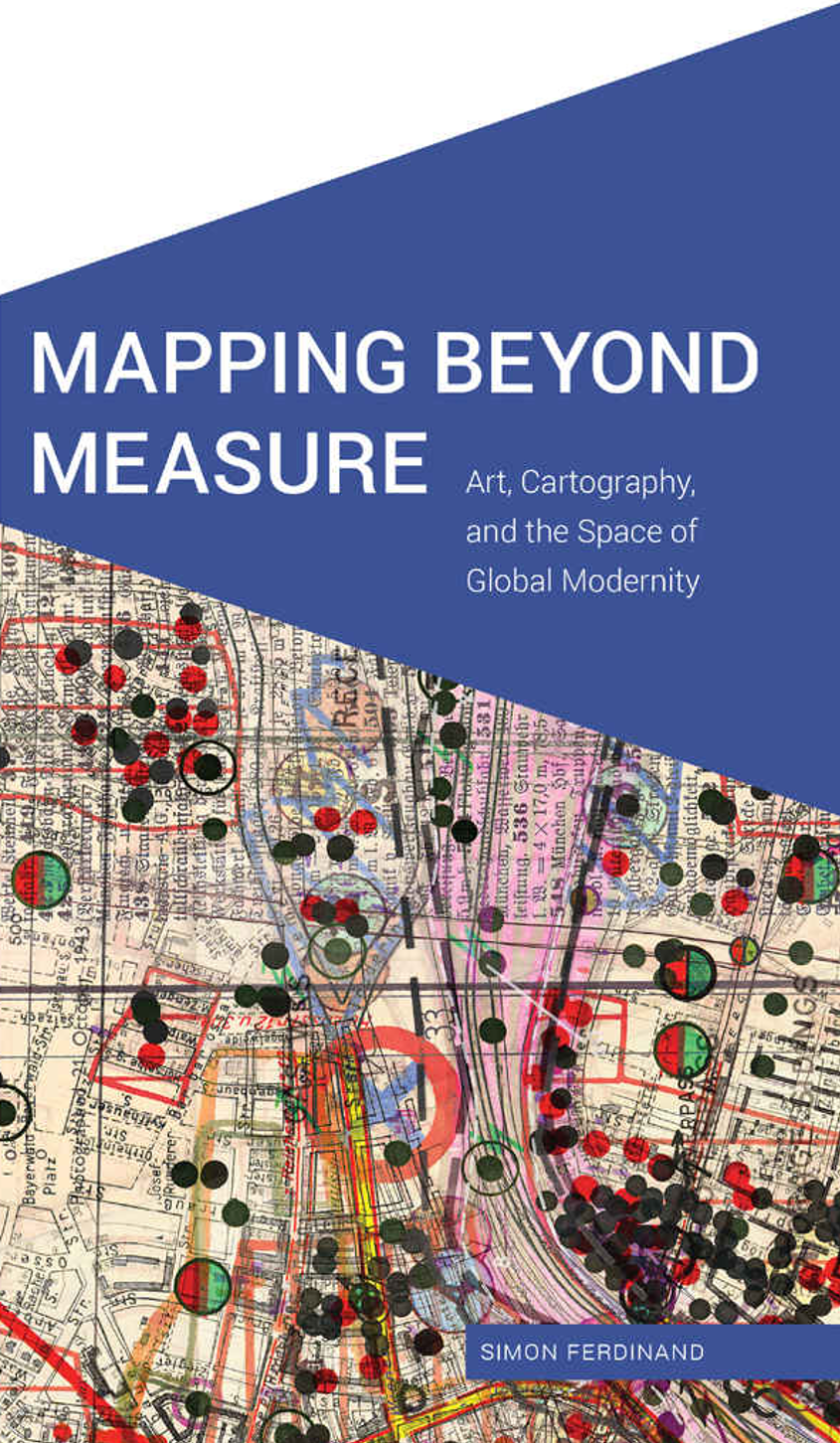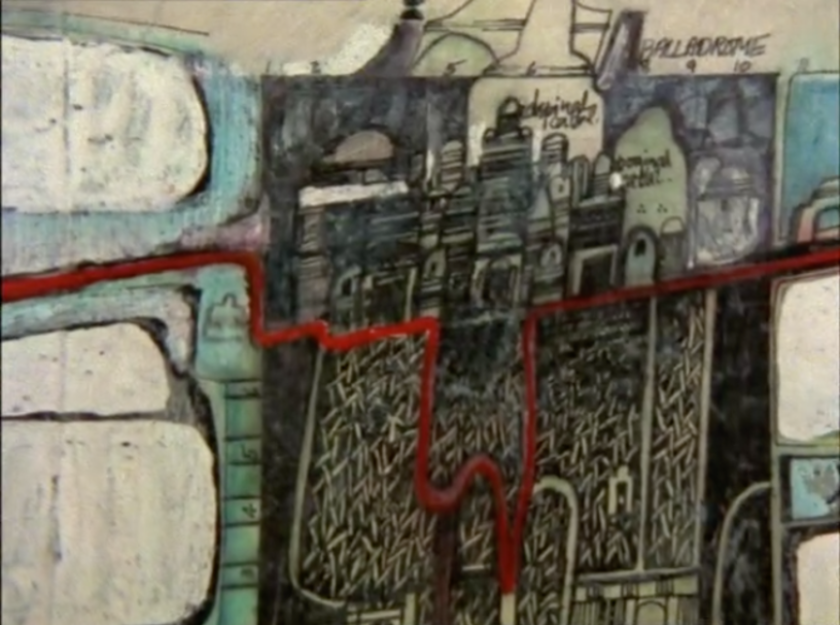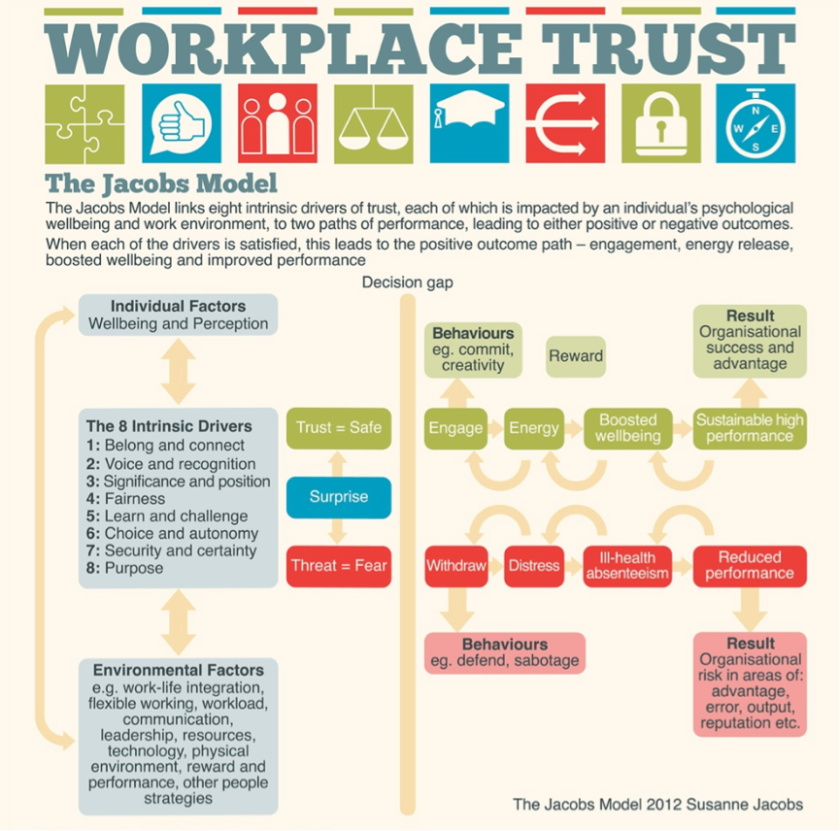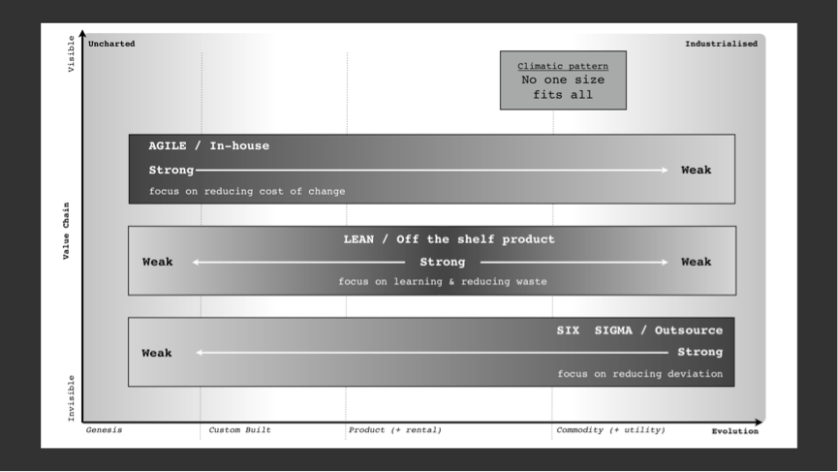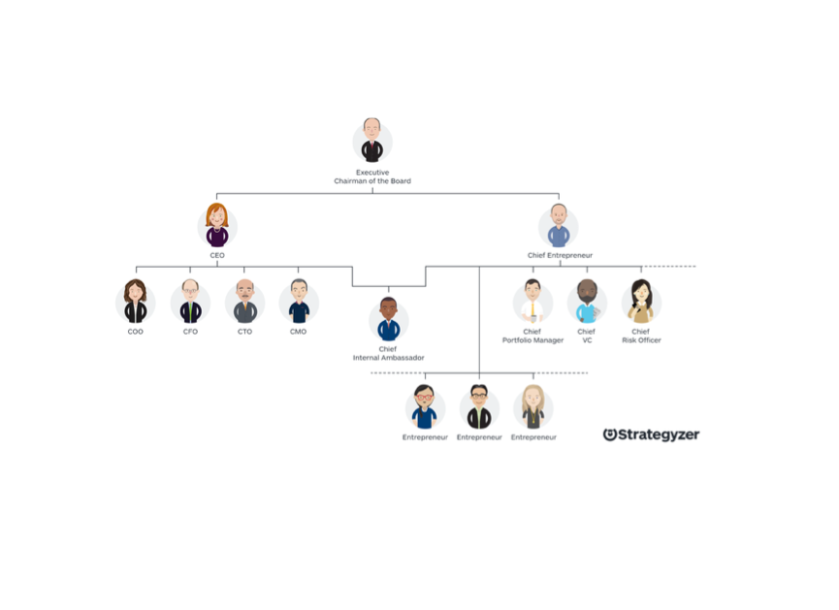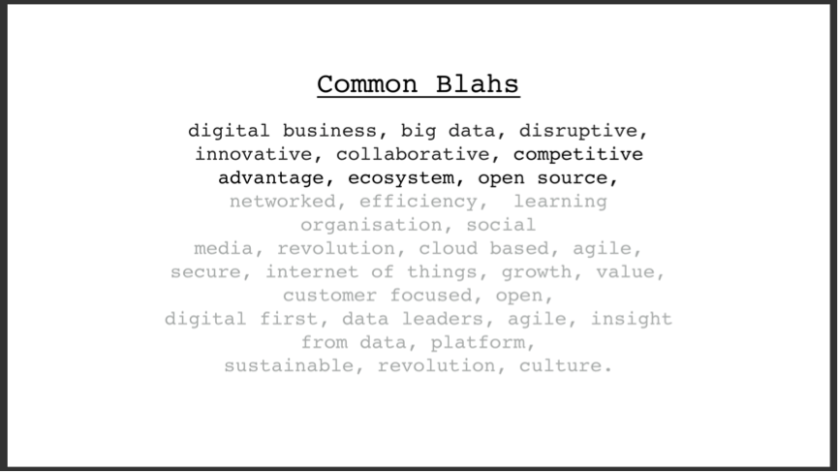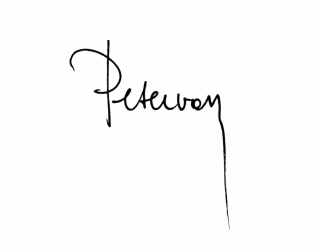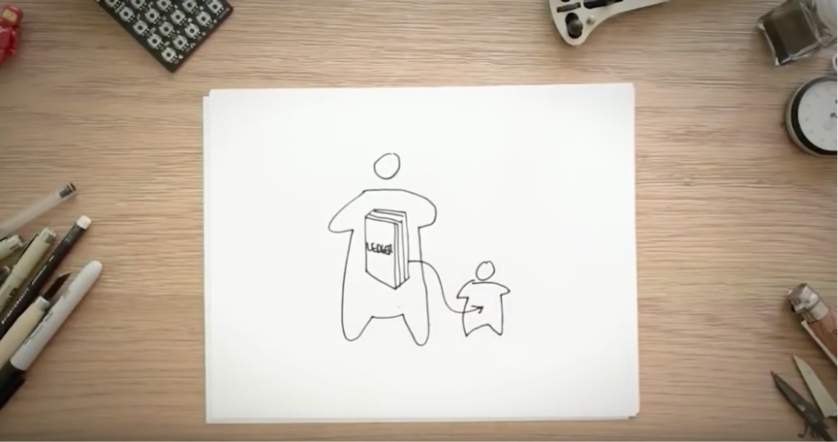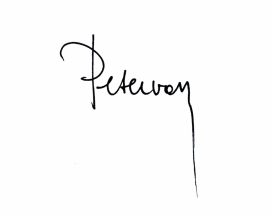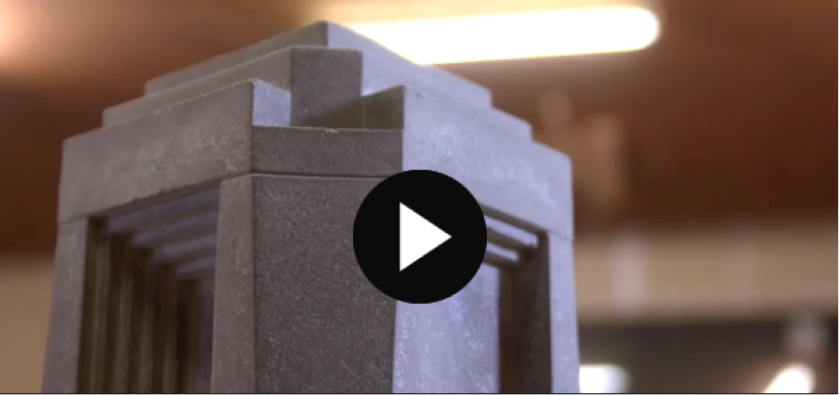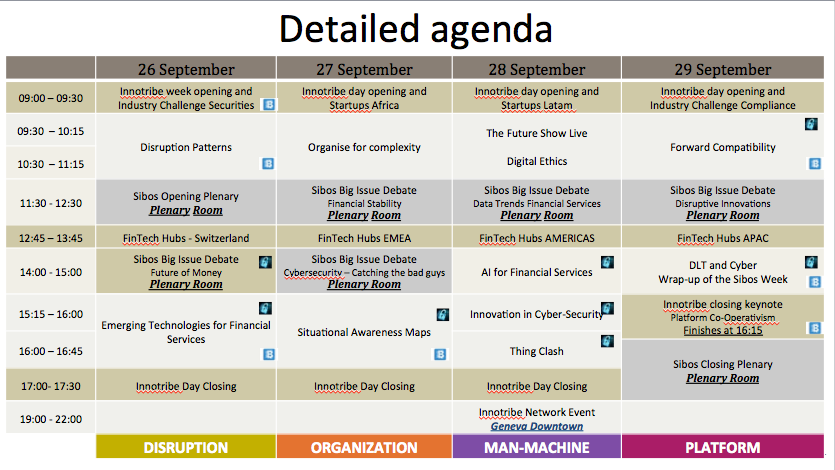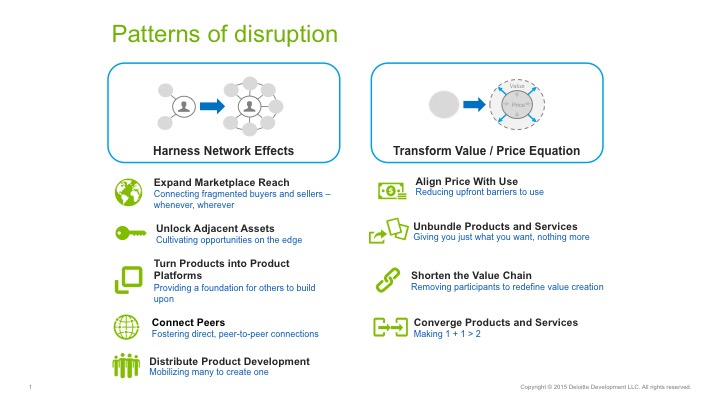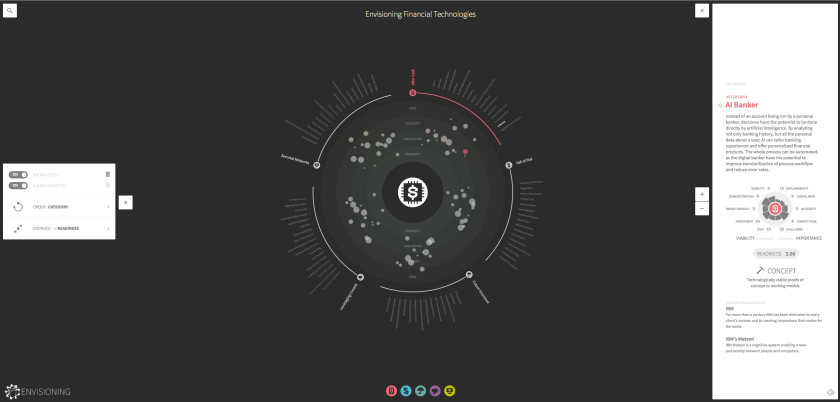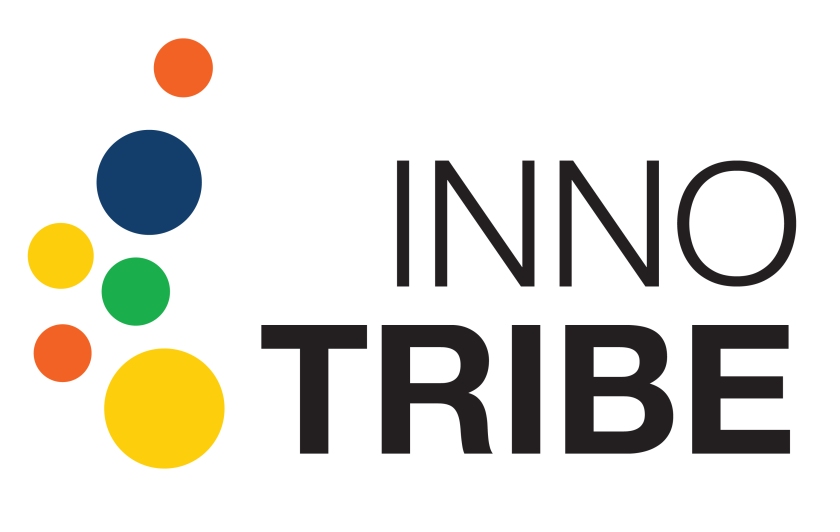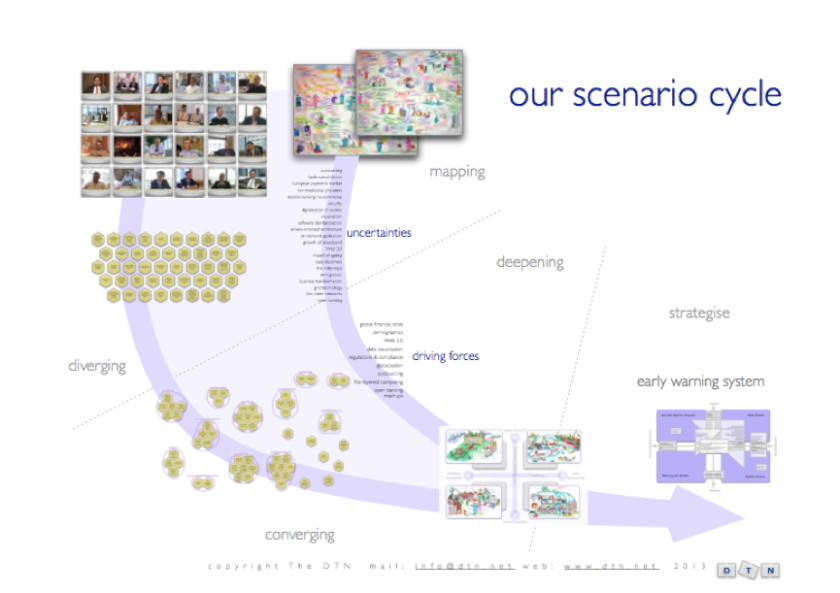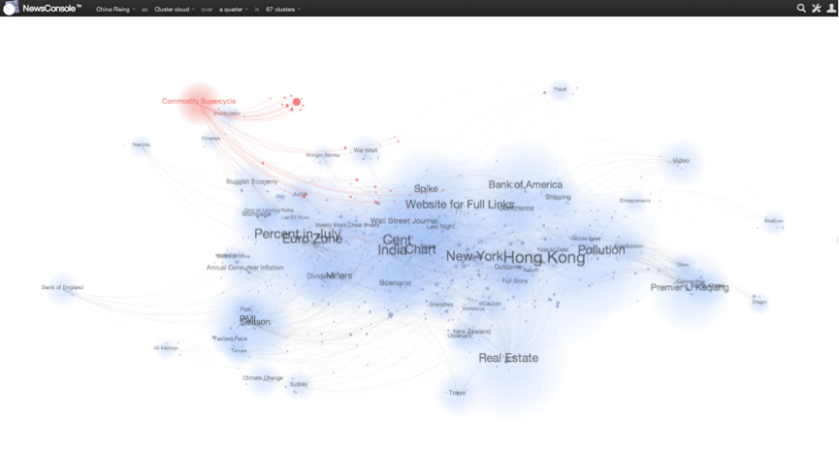The way we think about change, disruption, and transformation (or whatever you want to call it) is going to be completely different in 5 years time. The speed of change is so big that our thinking itself is getting disrupted. The underestimated and ignored exponential power in all of this is the “power of networks”. This post is a follow of the post “Fintech 2017 – Quo Vadis?”
I think we are in the middle of a network blitzkrieg, a big shift driven by network powers.

WW-II Blitzkrieg Stuka airplanes
But instead of the medium being the air and the devices the Stuka airplanes piloted by humans, the medium today is made of networks and the Stukas are replaced by hyper-connected computers driven my algorithms.
A lot of the reflection in this post are based on the following books and thinkers:
Kevin Kelly’s latest opus grande The Inevitable describes the 12 Inevitable Technological Forces That Will Shape Our Future:
- Becoming
- Cognifyung
- Flowing
- Screening
- Accessing
- Sharing
- Filtering
- Remixing
- Interacting
- Tracking
- Questioning
- Beginning
In The Seventh Sense, Joshua Cooper Ramo talks about a “connected-age sensibility” to be able to read and understand networks:
The Seventh Sense, in short, is the ability to look at any object and see the way in which it is changed by connection
Even as this new age advances, most of our leaders still think in terms of disconnected dangers
We have to cultivate a new instinct, one intended to make us more human, in a sense, not only more technical
Think of how often, at moments of anguish or revolution, it is the fragile-looking bubbles of philosophy or art or science that endure.
And in Whiplash, Joi Ito explains how “Change doesn’t care if you’re ready”.
This is the power of pull over push—it leverages modern communications technologies and the decreased cost of innovation to move power from the core to the edges, enabling serendipitous discoveries and providing opportunities for innovators to mine their own passions.
All these insights are of course based on big theme of “we are interconnected”. In other words, new network rules of power apply in the “we are connected” era and our leaders are not prepared for it. That became even more apparent during the main WEF Davos session on the Global Economic Outlook. I watched it live after just having read the Seventh Sense.
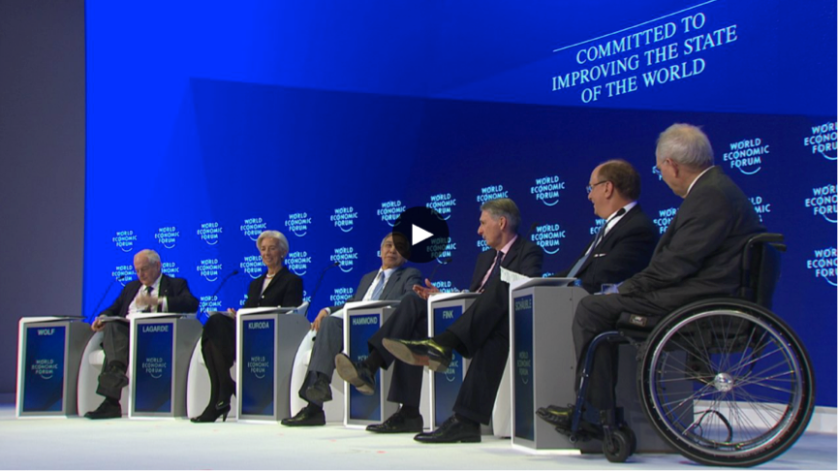
These leaders offer a lot of lip service to the “we are interconnected” meme, but keep on playing the old zero-sum finite games and wars. Witness Fink from Blackrock at min 11:46 when he almost joyful says:
“regulation inhibits new entrants and that is not a bad thing”
But networks come with their own dynamics. In his yearly situational awareness post, Jordan Greenhall goes deep on “Deep Code”, and “Deep State”, and describes very well what I have labeled here as “Network Blitzkrieg”:
“The Deep State developed in and for the 20th Century. You might say that they are experts at fighting Trench Warfare.
But this is the 21st Century and the Insurgency has innovated Blitzkrieg.”
Jordan is describing a blitzkrieg for Collective Intelligence, being fought on four fronts:
- Front one: communications infrastructure
- Front two: the deep state
- Front three: globalism
- Front four: the new culture war
The main point Jordan is making is that the Deep State is fragmented, and so far not efficient in responding adequately to the network blitzkrieg of the Trump cohort. A lot of the challenges of the Deep State seem to be related to the problem of not being able to shift to a network blitzkrieg mode, from tight synchronisation to loose synchronization.
Last year, Venkatesh Rao (aka Ribbonfarm) did a great tweet-storm-like-post on this topic of synchronisation. He calls our age the age of atemporality.
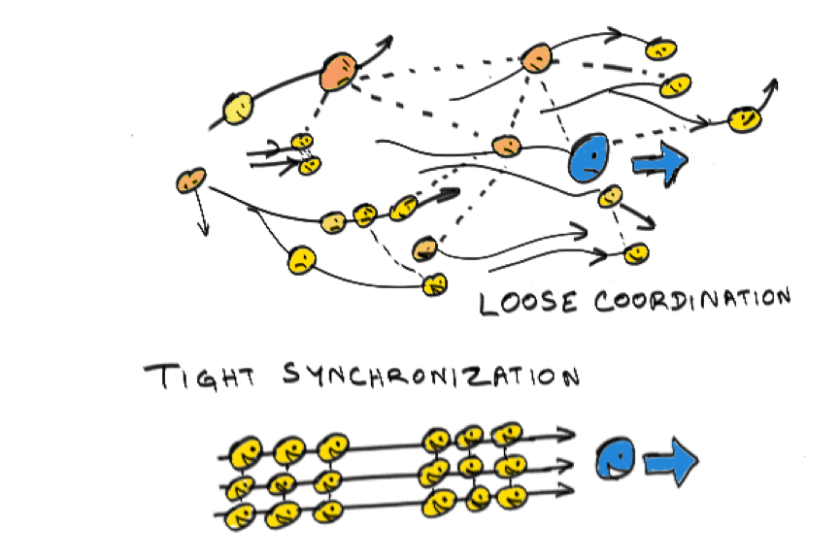
Illustration by Venkatesh Rao
“In tight synchronization, you’re on the same clock as everybody else, fit yourself into the same templates, report up the same chain, and communicate via standard protocols.
Welcome to atemporality. So long as you thrive on loose coordination rather than tight synchronization, it’s a beautiful thing.”
In previous posts and essays, Ribbonfarm even had a series on “Blitzkrieg”, where he described four categories of Blitzkrieg attributes:
- Einheit (trust)
- Auftragstaktik (clear mutual agreements), missionary tactical contracts
- Schwerpunkt (strategic intent)
- Fingerspitzengefühl (finger-tip skill) is the foundation
In The Future of Tipping, http://www.ribbonfarm.com/2014/12/02/the-future-of-tipping/,(a post about authoritarian command-and-control models to control the customer’s relationship to the brand, and hence tipping), he the four describes blitzkrieg attributes in John Boyd’s philosophy of warfare applied to business:
CEO sets clear intent (Schwerpunkt); HR develops strong trust culture (Einheit); operations focuses on developing strong, instinctive skills culture through tacit learning (Fingerspitzengehful); everybody manages/is managed through a cascade of mutually negotiated “contracts” that devolve as much autonomy as possible to lower layers (Auftragstaktik); the business relies on loose and agile coordination rather than tight synchronization/command-and-control.
Ribbonfarm, Jordan Greenhall, and Simon Wardley all focus on situational awareness, strategy, tactics, operations and doctrine. It would be great to have them together one day in one of Petervan Productions’ events 😉
Add to all this the lack of trust and Bruce Scheier’s insight that we are moving from the Internet of things (with a build-in computer) to Internet of Computers (with things attached to it), and you get a pretty dystopian but probably very realistic picture of the future something that James Bridle coined “A new dark age”.
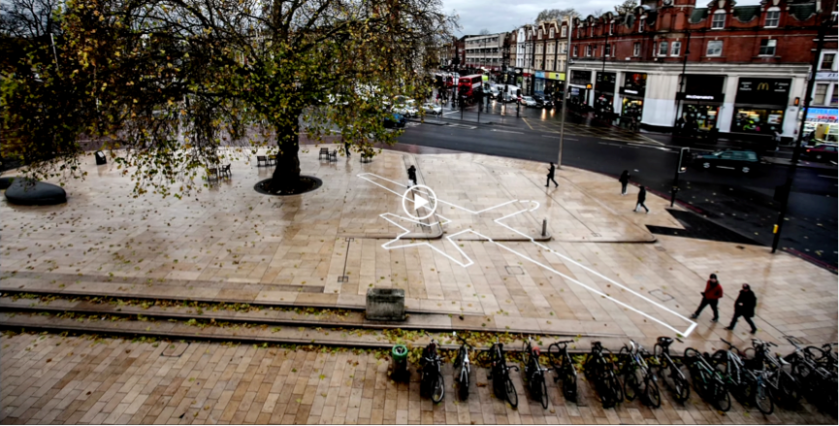
Drone shadow by James Bridle
James Bridle is a British writer and artist living in Greece. His work explores the impact of technology on society, law, geography, politics, and culture. His Drone Shadow installations have appeared on city streets worldwide, he has mapped deportation centres with CGI, designed new kinds of citizenship based on online behaviour. and used neural networks and satellite images to predict election results. A New Dark Age is an exploration of what we can no longer know about the world, and what we can do about it.
It is a “great” talk about Turbulence, Big Data, AI, Fake News, and Peak Knowledge, and like many if the authors mentioned above, he is alluding to a new digital literacy and legibility. A literacy that acknowledges that in our digital state, everything can be copied, except…. Trust.
Kevin Kelly asks, “What can not be copied?” and his answer is “Trust. Trust must be earned. It cannot be faked”. Our hope is in what Kelly beautifully described as “generative qualities”.
These are qualities that are “better than free”. Qualities generated at the time of the transaction aka it is all about the experience what people pay for. In Kelly’s view, there are 8 generative qualities:
- Immediacy
- Access to beta version for ex, or when released
- Personalisation
- A film without explicit language
- Interpretation
- A manual, explanation of free DNA
- Authenticity
- Accessibility
- Embodiment
- White cottony paper bound book, it feels so good
- The value of a paid ephemeral embodiment of something you could download for free
- Patronage
- It must be easy to do
- The amount must be reasonable
- There is a clear benefit
- Money will directly benefit the creator
- Discoverability
- A work has no value unless it is seen

Saruman uses a palantir in Lord of the Rings
So what would be the defences against such network blitzkrieg?
One strategy would be to try to defeat the enemy with the same weapons. But that assumes we are playing finite games, and I feel we only can win this battle by playing infinite games.
We should not be naïve, and drop all our common-sense defences against data-, privacy-, surveillance- and cybersecurity attacks with state of the art defense mechanisms and tools, but another strategy in defending our humanity in the long term may come from those infinite games.
Or maybe our defense in this move from enlightenment to entanglement is in dropping the separation of body and mind, feeling and ratio, form and content.

“Fame and success” by Hilde Overbergh – 2016
Part of expo “REFRAME” in The White House Gallery
Art may be inspiring here. In a recent conversation between art curator Hans Theys and artist Hilde Overbergh in the context of the expo “REFRAMED”, Hans arguments that form and content are inseparable, and that his sole criteria for assessing art are:
- Is it well made?
- Does it touch me?
Very much like Kevin Kelly, this is about what cannot be measured, what cannot be represented in numbers, big data, and algorithms.
In a very recent post Kyle Eschenroeder (also on Ribbonfarm) said:
The confidence created by our palantír-ish technologies is a confidence in our measurements, not in ourselves. The more minutiae we measure, the less respect we have for taste or experience
Caring puts us in the posture of playing an infinite game rather than a finite one. This means favoring “improvisation over fixed rules, internal sensibilities over imposed morals, and playfulness over seriousness.”
So our defense against a Network Bliztkrieg may be in the subconscious, where we don’t care about the fakeness our realness of the news and our reality, but more about what makes us unique as human beings: the ability to play infinite games and truly care.



